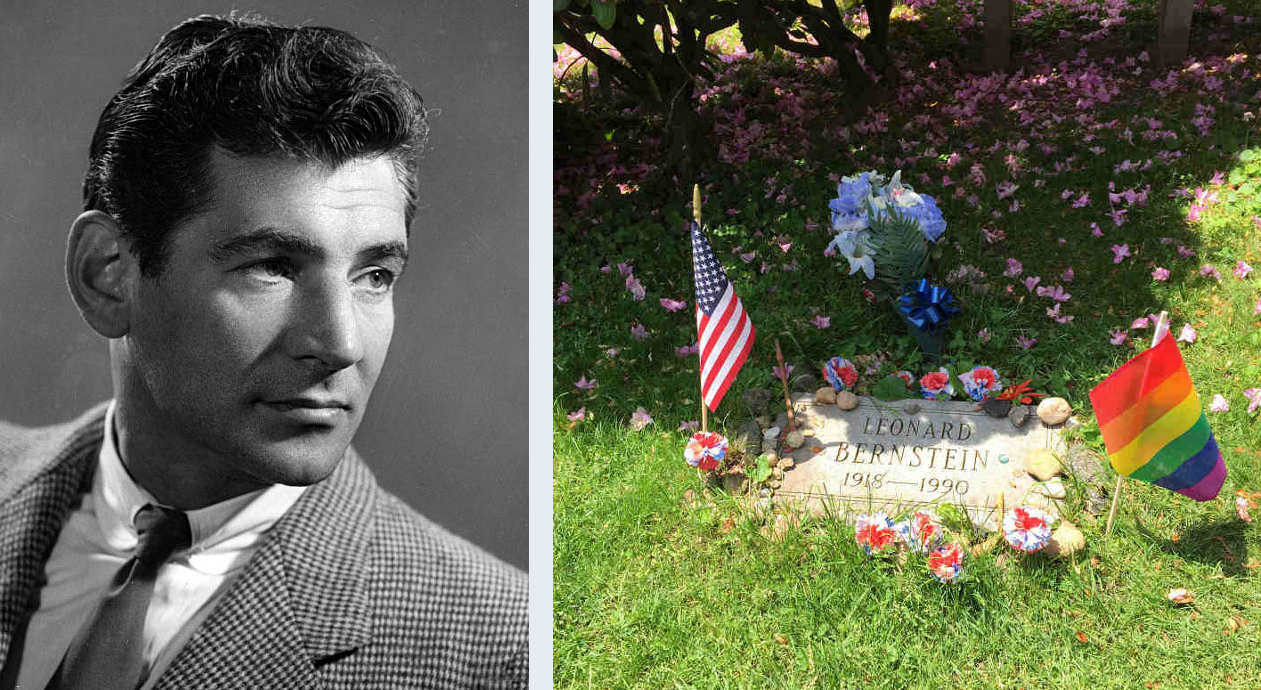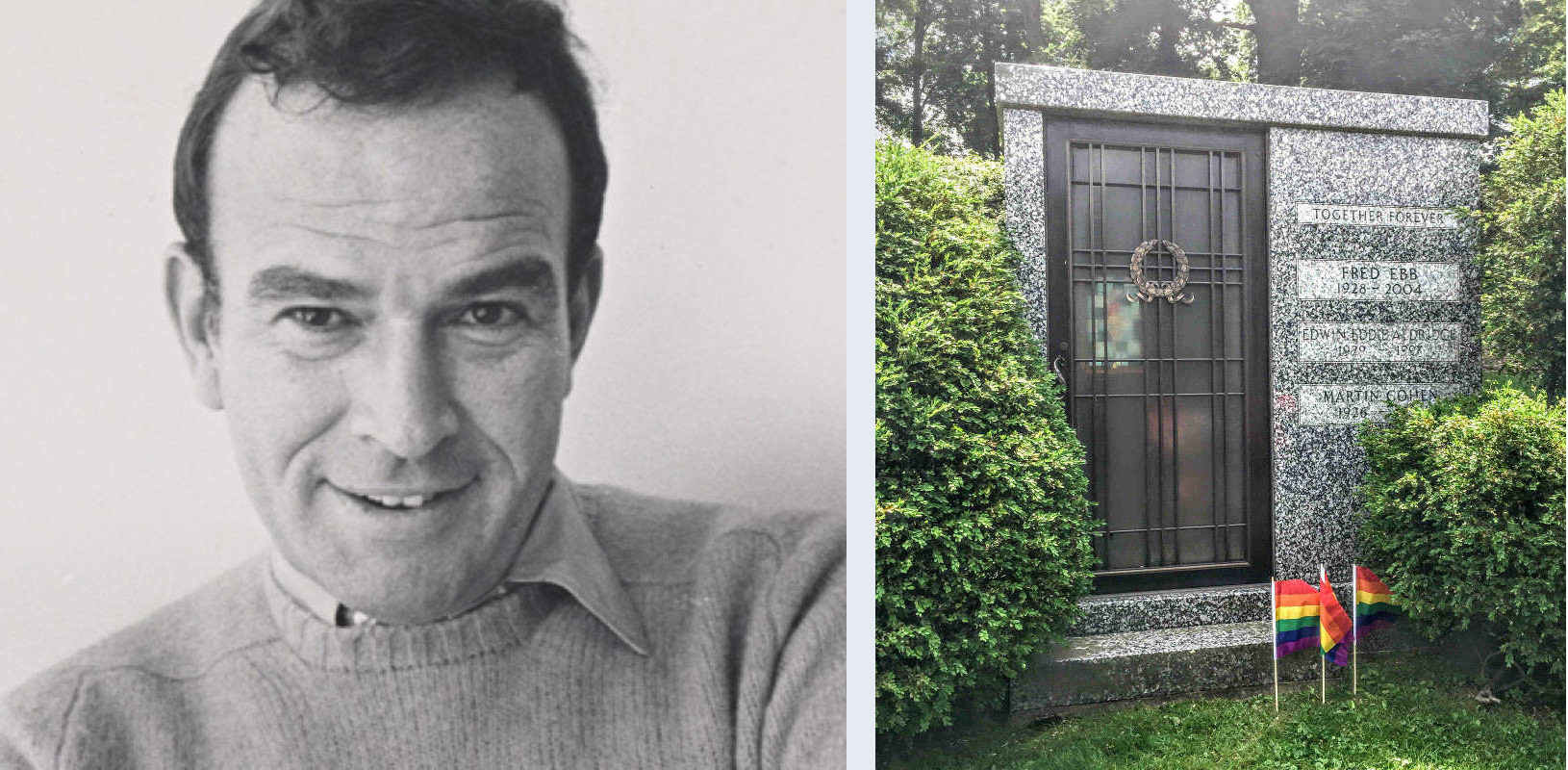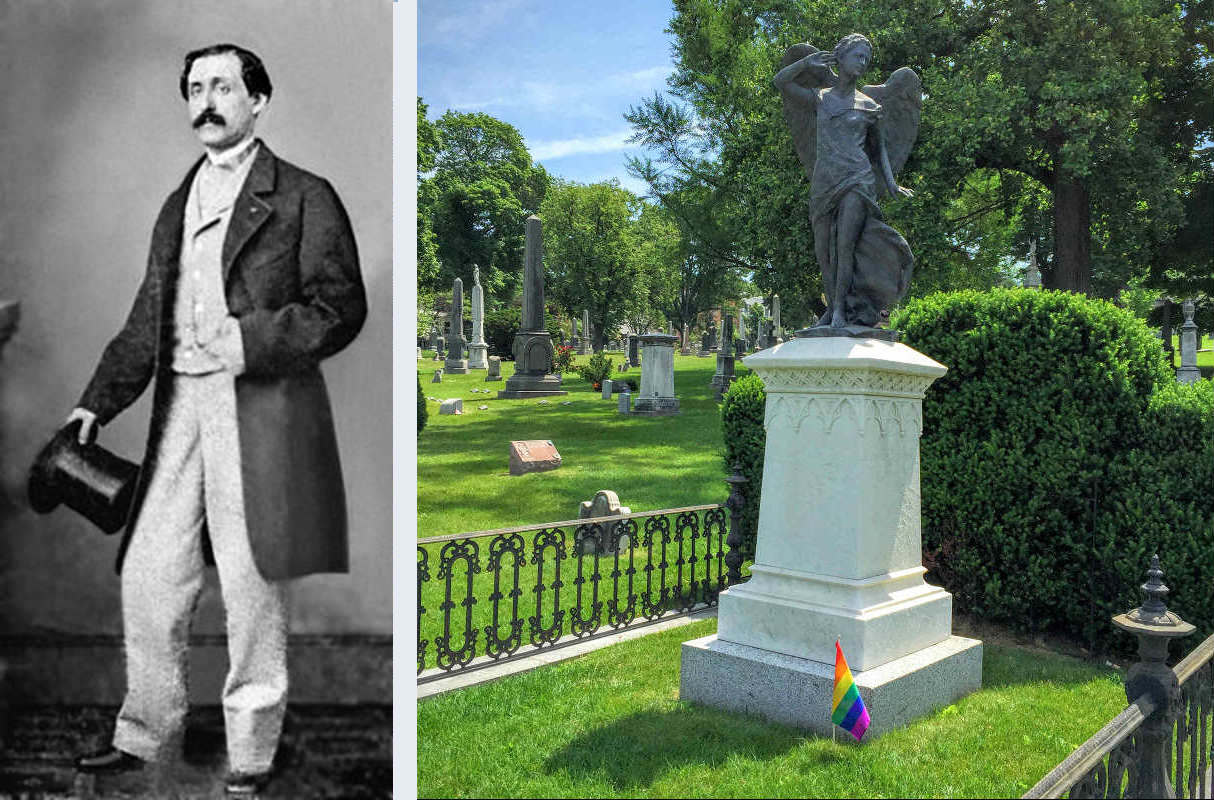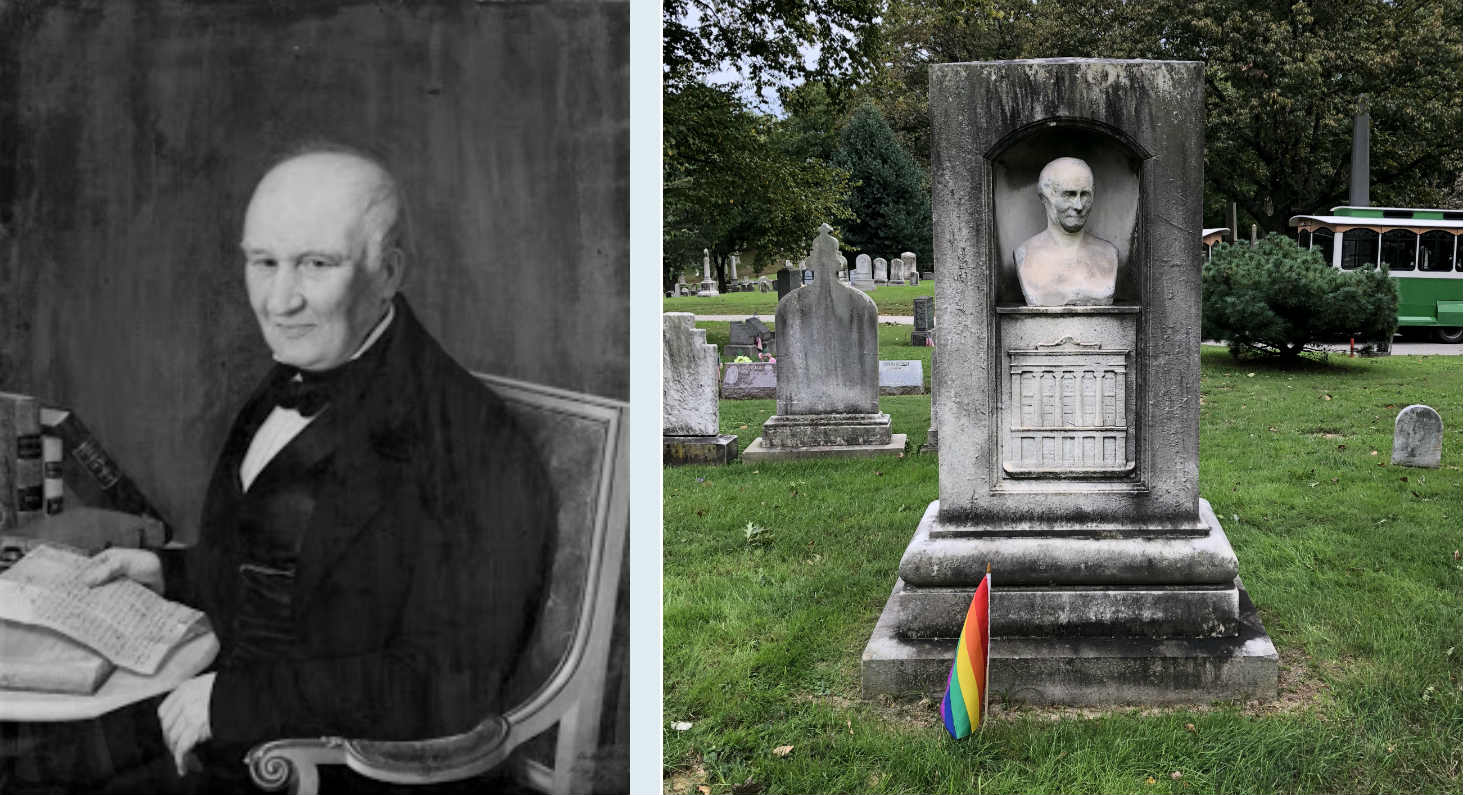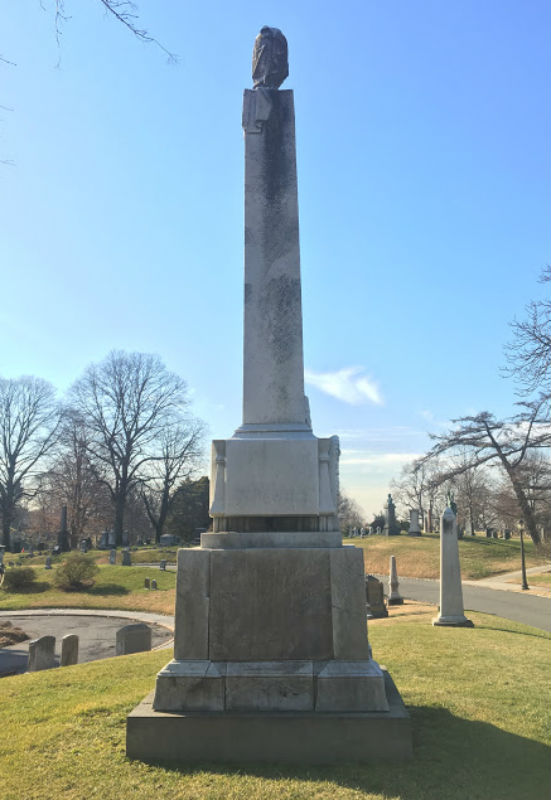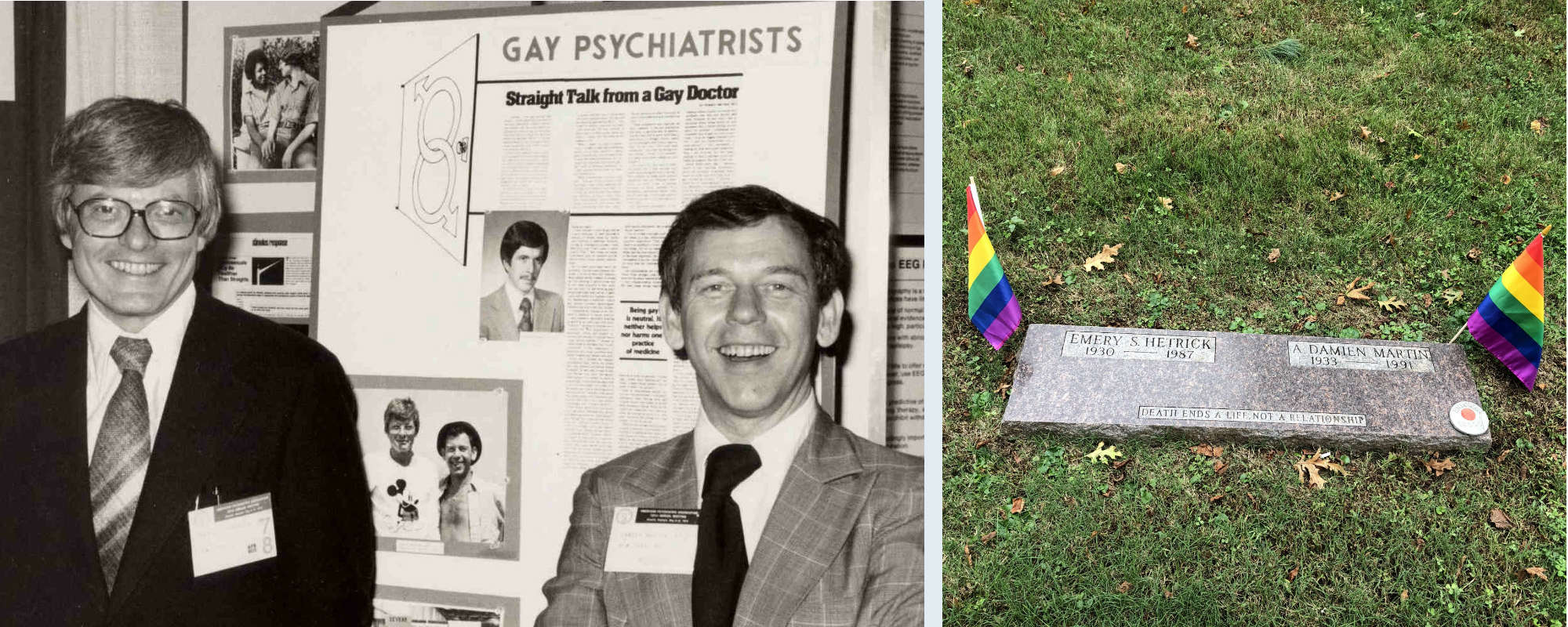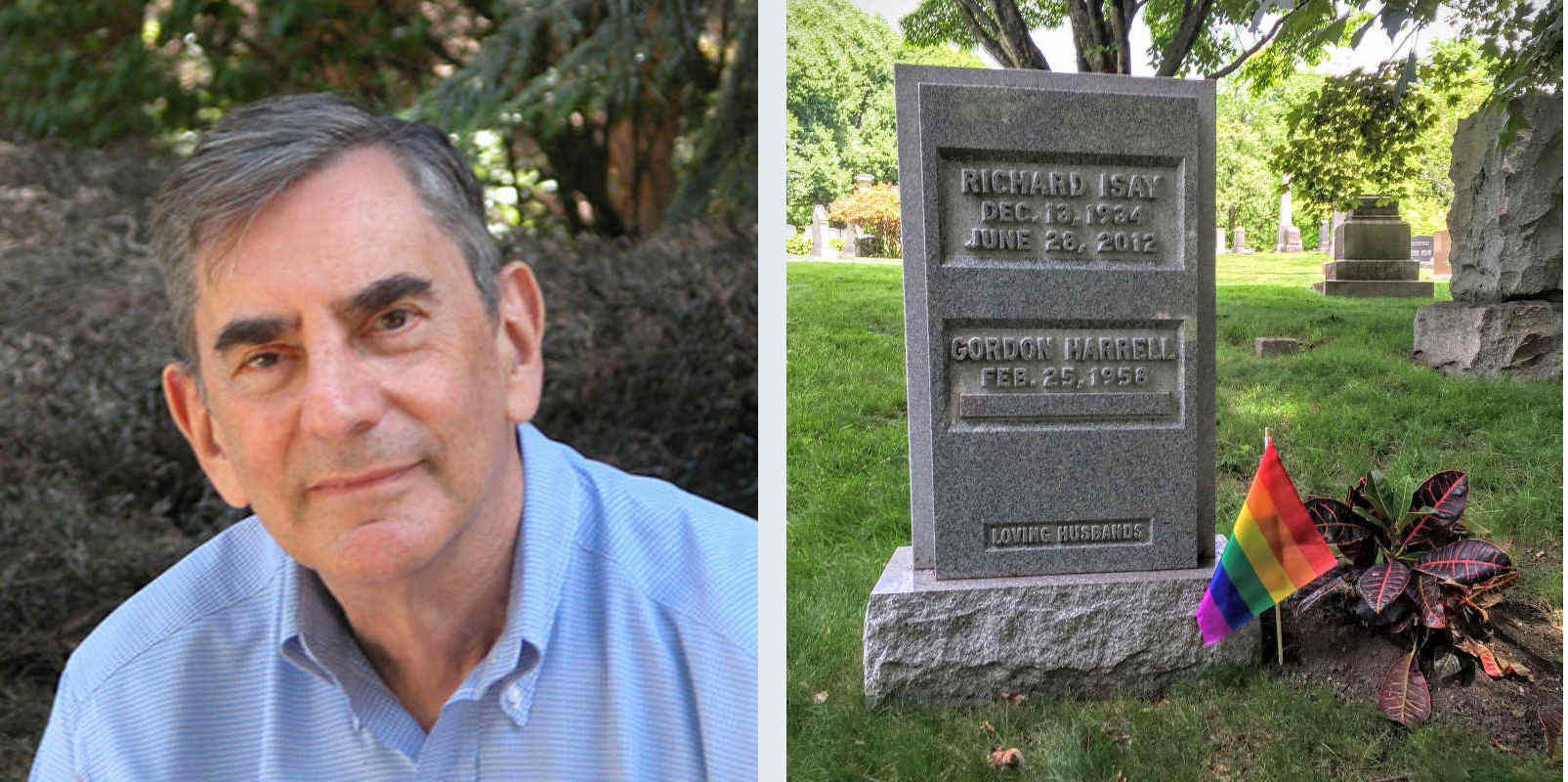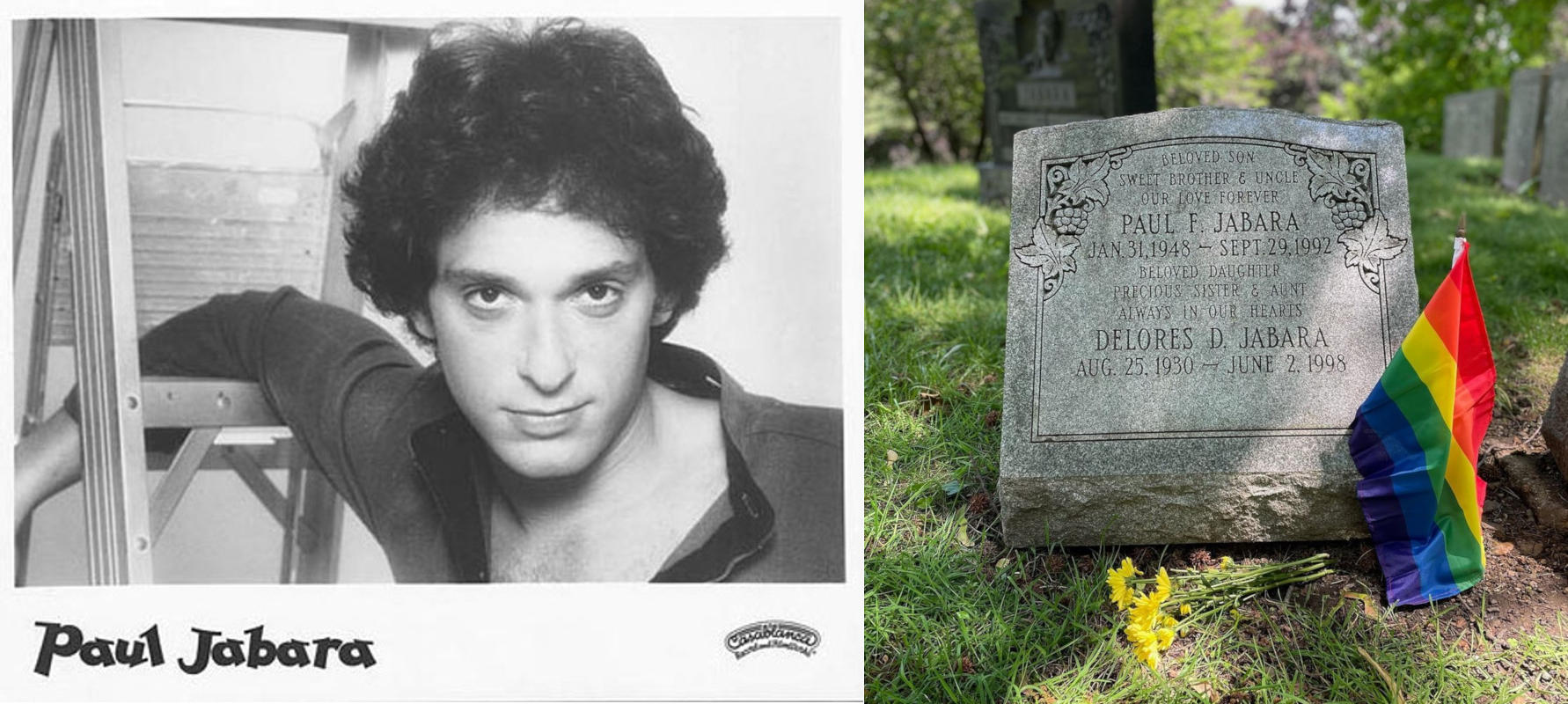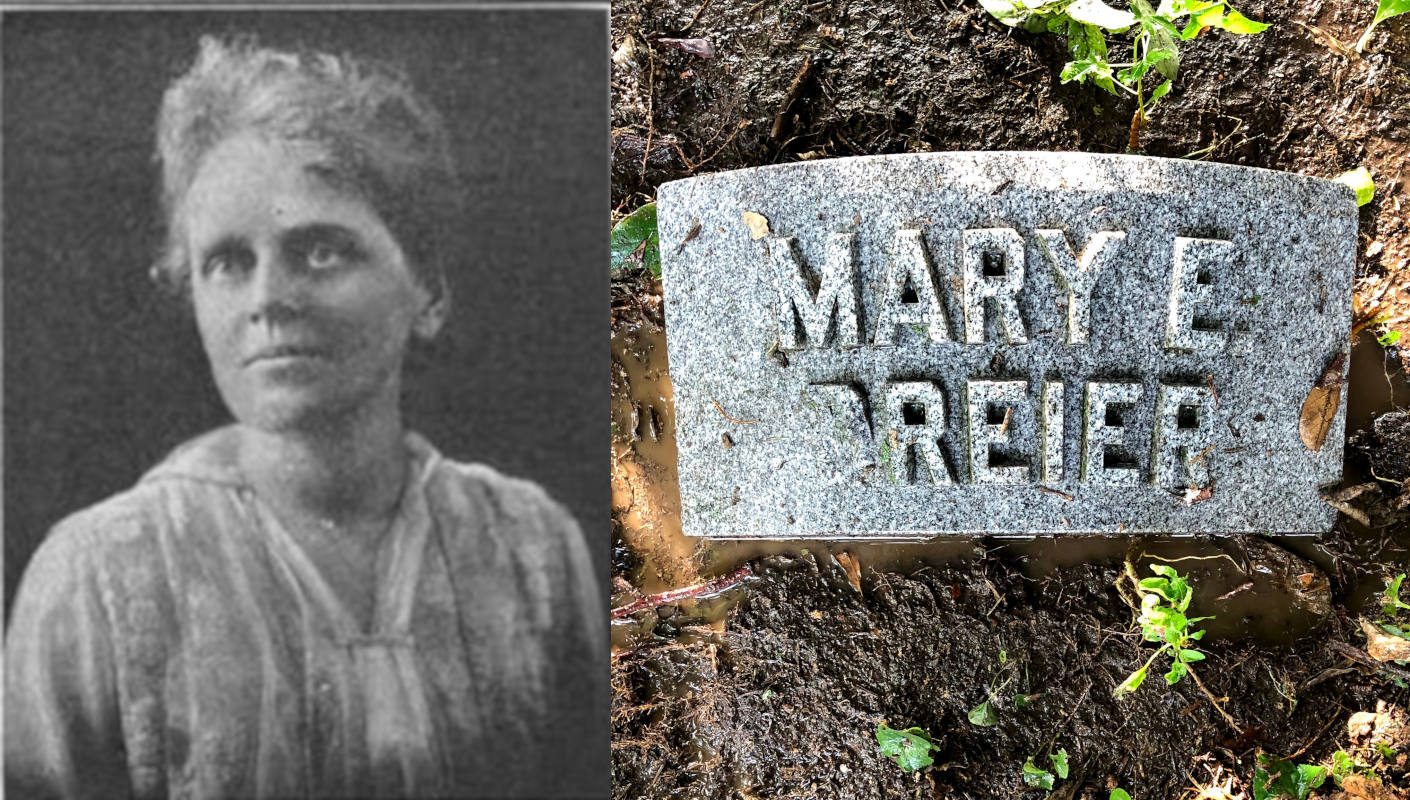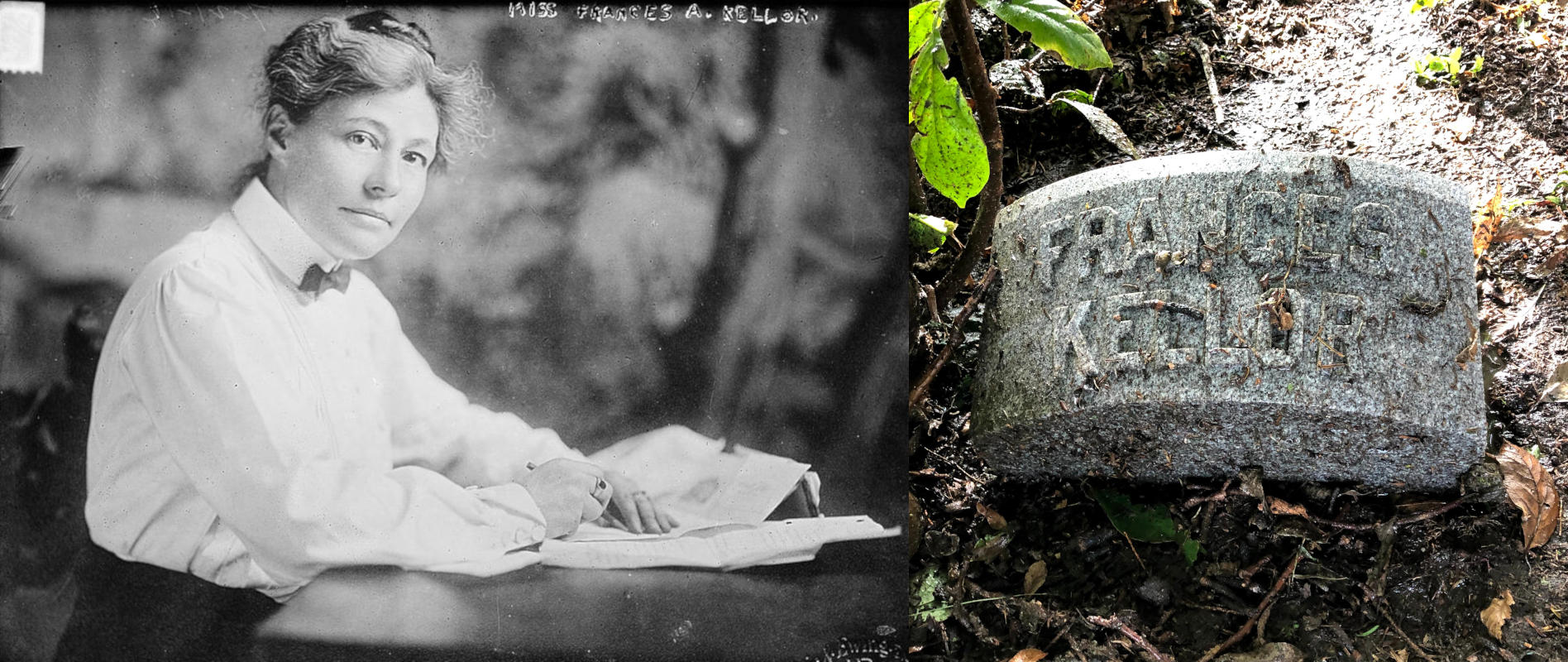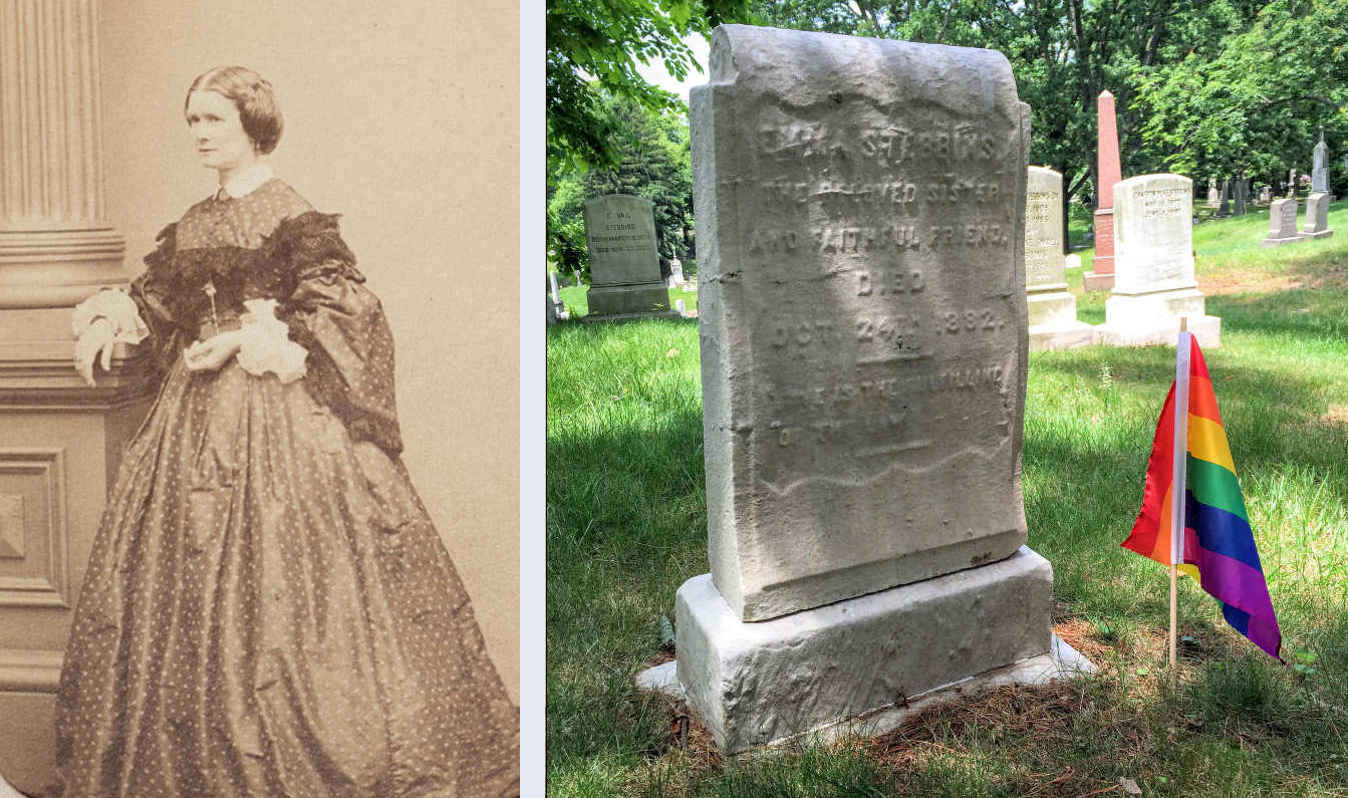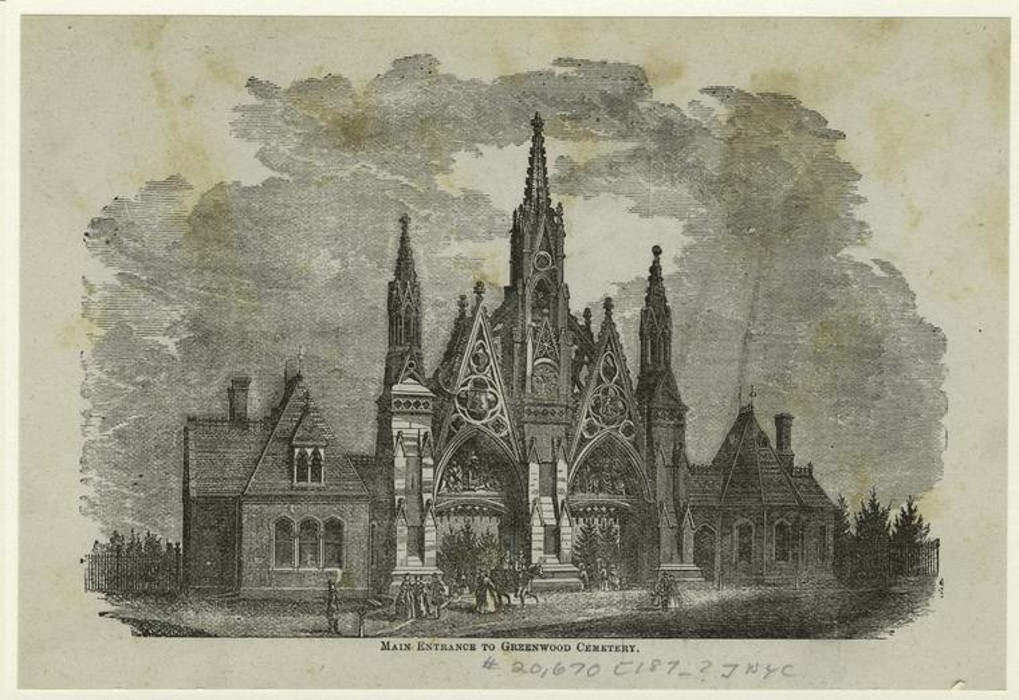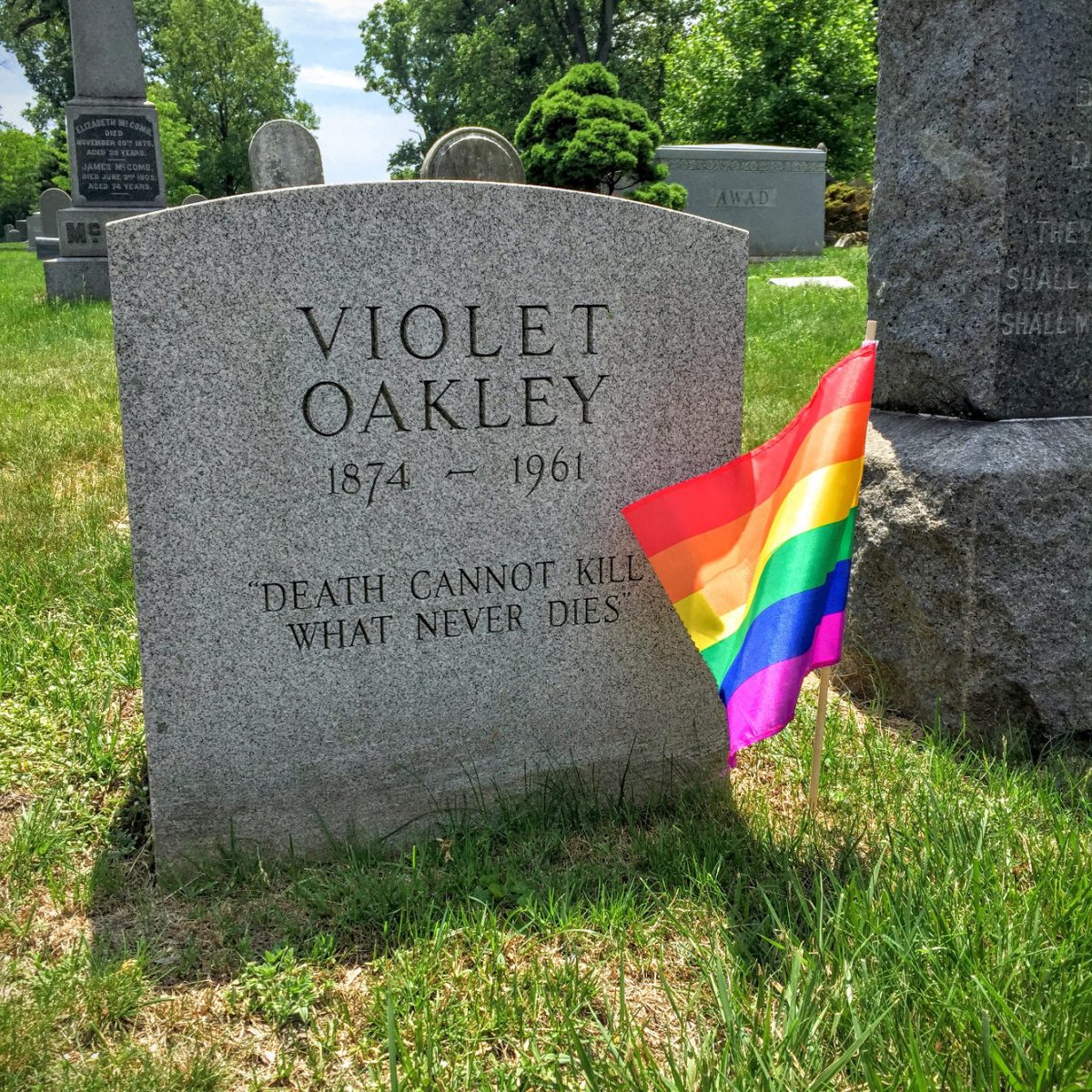
Green-Wood Cemetery
overview
Many LGBT individuals are buried at Green-Wood Cemetery in Brooklyn, one of the most beautiful landscapes in America.
Here one can visit the gravesites of such famous individuals as Leonard Bernstein, Fred Ebb, and Emma Stebbins.
History
Bucolic Green-Wood Cemetery, founded in 1832, is the final resting place of many members of the LGBT community. Well-known figures include:
Susie M. Barstow (1836-1923) was a successful second-generation Hudson River School artist, as well as an art educator, and lecturer. Born into a wealthy Brooklyn family, Barstow maintained studios in Brooklyn and Sebago, Maine, but traveled extensively with her partner of many years, Florence Nightingale Thallon, who is also buried at Green-Wood (their relationship had ended for unknown reasons). Barstow showed her work at prominent exhibitions, was a founder of the Brooklyn Museum, taught at the Brooklyn Institute, and was an active suffrage campaigner. She is buried in the Barstow family plot.
Leonard Bernstein (1918-1990) was a prominent composer for symphony orchestras, Broadway musicals, such as On the Town (1944) and West Side Story (1957), and films, including On the Waterfront (1954). He was also one of the most important and charismatic conductors of the 20th century, notably at the New York Philharmonic. Bernstein lived at the Osborne and Dakota Apartments.
Elizabeth M. Cushier (1837-1931) was a leading 19th-century obstetrician and surgeon at the New York Infirmary for Women and Children and a professor of medicine at its Women’s Medical College. Both co-founded by her partner Emily Blackwell (1821-1910), an eminent English-born physician who was the third woman to earn a medical degree in the United States. The couple lived together in New York City from 1882 to c. 1900 and were together 28 years until Blackwell’s death in 1910. Blackwell is buried in Abel Hill Cemetery on Martha’s Vineyard in Massachusetts.
Fred Ebb (1928-2004) was a musical theater lyricist who, as part of the team of Kander and Ebb, wrote the lyrics for such musicals as Cabaret (1966) and Chicago (1975). He is interred in a mausoleum with Edwin Aldridge and Martin Cohen.
Louis Moreau Gottschalk (1829-1869) was a composer and pianist who was a virtuoso performer of his own music. After the Angel of the Music statue at his grave site was vandalized in 1959, Green-Wood Cemetery raised funds over a nearly 15-year period to create a new version, which was unveiled in 2012.
Augustus Graham (born Richard King; 1776-1851) and John Bell Graham (born John Bell; ?-1853) were important figures in early 19th century Brooklyn. They are buried at Green-Wood, though not together. After Augustus left his wife and children, he and John adopted the last name Graham, moved in together, and posed as brothers. There was speculation at the time, and in the years that followed, that these clues indicated a same-sex relationship. Augustus founded the Apprentices’ Library in Brooklyn Heights in 1824, which later became the Brooklyn Institute and finally the Brooklyn Museum of Art. In 1851, John founded the Brooklyn Society for the Relief of Respectable Aged, Indigent Females, which later became the Graham Home for Old Ladies (it was converted to condos in 2001).
Dr. Emery S. Hetrick (1931-1987) and Dr. A. Damien Martin (1933-1991) were founders of the Institute for the Protection of Lesbian and Gay Youth (later renamed the Hetrick-Martin Institute) and Harvey Milk High School. Their gravestone includes the inscription, “Death ends a life, not a relationship,” which comes from the Robert Anderson play, I Never Sang for My Father (1968). They both died of AIDS-related complications, ages 56 and 57, respectively, in Manhattan.
Richard Isay (1934-2012) was a psychiatrist, psychoanalyst, author, and LGBT rights activist. He spearheaded a campaign resulting in the changes to the homophobic policies of the American Psychoanalytic Association (APsA) in 1991 and was also the organization’s first openly gay member. The “Loving Husbands” inscription on his gravestone is believed to be the first, and possibly only, such example at Green-Wood that explicitly commemorates a same-sex union.
Paul Jabara (1948-1992) was a Lebanese American singer/songwriter and actor who wrote songs for artists such as Donna Summers, including her hit Last Dance (1978), and Barbra Streisand. He also co-wrote and co-composed the hit song It’s Raining Men (1982) for the Weather Girls. As a performer, Jabara was part of the original Broadway cast of Hair (1968) and the original West End cast of Jesus Christ Superstar. He died of AIDS, age 44, in Los Angeles.
Frances Kellor (1873-1952) and Mary E. Dreier (1875-1963) were social activists who were part of a large network of lesbian suffragists and reformers centered in America’s large cities. Both women were involved with many Progressive-Era reform organizations and served on multiple government committees and institutional boards. Brooklyn-born Dreier was active in women’s labor issues, notably at the Women’s Trade Union League, while Kellor was especially concerned about conditions of immigrants and African American women. Kellor and Dreier had what writer Victoria A. Brownworth calls a “passionate and consuming” relationship.
Helen Severine Lassen (1840-1920) and L. Adele Cuinet (1855-1933) were pioneer medical practitioners in Brooklyn. Lassen was one of the first female doctors in New York and Cuinet was Brooklyn’s first female dentist and, for many years, the only woman who was a Doctor of Dental Surgery in New York. They both practiced out of their rowhouse at 152 Henry Street in Brooklyn Heights. Lassen and Cuinet were also active in the suffrage movement and in civic reform in Brooklyn. Unlike many other same-sex couples, Lassen and Cuinet are buried in the same plot.
Violet Oakley (1874-1961) was a renowned and prolific illustrator and muralist and the first American woman to receive a public mural commission. This was for the Pennsylvania State Capitol in Harrisburg, for which she was selected by the architect in 1902. She produced 43 murals over the course of nearly 25 years. She excelled in a field dominated at the time by men, and her artwork often exemplified the themes of world peace and justice. Her gravestone includes the inscription, “Death cannot kill what never dies”. Oakley lived with artist Edith Emerson in Philadelphia for over fifty years, and they painted portraits of each other.
Raoul Pene Du Bois (1914-1985) was among the most important costume and set designers on Broadway, specializing in musicals during the golden age of that art form in the post-World War II period. He designed his first costumes for the Ziegfeld Follies in 1934 and went on to design entire Follies numbers and the costumes and/or sets for Du Barry Was a Lady (1939), Carmen Jones (1945), Call Me Madam (1950), Wonderful Town (1953; Tony Award), Plain and Fancy (1955), Bells are Ringing (1956), The Music Man (1957), No, No, Nanette (1971; Tony and Drama Desk Awards), and many other shows. He also worked on several movies, including Louisiana Purchase (1941) and Lady in the Dark (1944), both of which earned him Academy Award nominations for Best Art Direction.
Ingrid Sischy (1952-2015) was a South African-born writer and arts and fashion editor. Her anti-apartheid family moved to the United States when Sischy was a girl. She was educated at Sarah Lawrence where she was among the first students to come out as a lesbian. At the age of 27, she became an editor at Artforum, where she transformed the journal into a vibrant proponent of the avant-garde downtown Manhattan art scene. She was on the staff of The New Yorker from 1988 to 1996, where she wrote about the AIDS crisis that devastated the downtown art world. In 1989, she moved to Andy Warhol’s Interview and later became a writer and editor for Vogue and Vanity Fair, often working with her partner, then spouse, Sandra Brant.
Emma Stebbins (1815-1882) was a sculptor best known for her Angel of the Waters masterpiece that sits atop the Bethesda Fountain in Central Park, which she created in Rome in the 1860s while living with her lover, actress Charlotte Cushman. The sculpture was the first piece of public artwork by a woman in New York City. Her gravestone includes the inscription, “Love is the fulfilling of the law”.
Florence Nightingale Thallon (c. 1857-1924) was an amateur artist and musician who was born into a prominent Brooklyn family. She was the partner of artist Susie Barstow and traveled with her extensively, including an around-the-world tour until the relationship broke up in the early 20th century. She is buried in the Thallon family plot.
Annie Renssalear Tinker (1994-1924) grew up in a wealthy New York City household, becoming involved in social reform as a young woman. As a proficient horsewoman, she organized a women’s calvary that protected participants at suffrage marches. She suggested that the calvary be enlisted in World War I but settled for working as a nurse. Near the end of the war, while in Naples, she met Kate Nelson, and began a romantic relationship that lasted through her life, even after Nelson married. Tinker left her entire estate to Nelson for use during her life, with the remaining funds going to charities assisting working women. Following litigation from Tinker’s family, Nelson received half of the bequest and immediately donated a third to charity, specifically to support older women so that they could remain independent. Tinker’s charitable grants are now allocated through the New York Community Trust.
There are many other members of the LGBT community buried at Green-Wood. If you know of anyone, please let us know so that we can remember them here.
Entry by Andrew S. Dolkart, project director (March 2017; last revised January 2024).
NOTE: Names above in bold indicate LGBT people.
Building Information
- Architect or Builder: various landscape architects
- Year Built: 1832
Sources
“Annie Rensselaer Tinker: Tireless Suffragist, Fearless Advocate,” New York Community Trust (2019), bit.ly/3HWW6Vs.
Catherine Tinker, “Annie Rensselaer Tinker (1884-1924) of East Setauket and NYC: Philanthropist, Suffragist, WWI Volunteer in Europe,” Journal of Long Island History vol. 26 (2017).
“Ingrid Sischy, Doyenne of Art and Fashion, Dies at 63,” The New York Times, July 24, 2015, binged.it/3Vyjuf7.
Jeffrey I. Richman, ed., Green-Wood at 175: Looking Back/Looking Forward (Brooklyn: Green-Wood, 2013).
Lillian Faderman, Odd Girls and Twilight Lovers: A History of Lesbian Life in 20th-Century America (New York: Columbia University Press, 1991).
Olive Hoogenboom, “August Graham,” Dictionary of Unitarian & Universalist Biography, August 30, 2001, http://bit.ly/2wbsUTt.
Do you have more information about this site?
This project is enriched by your participation! Do you have your own images of this site? Or a story to share? Would you like to suggest a different historic site?

